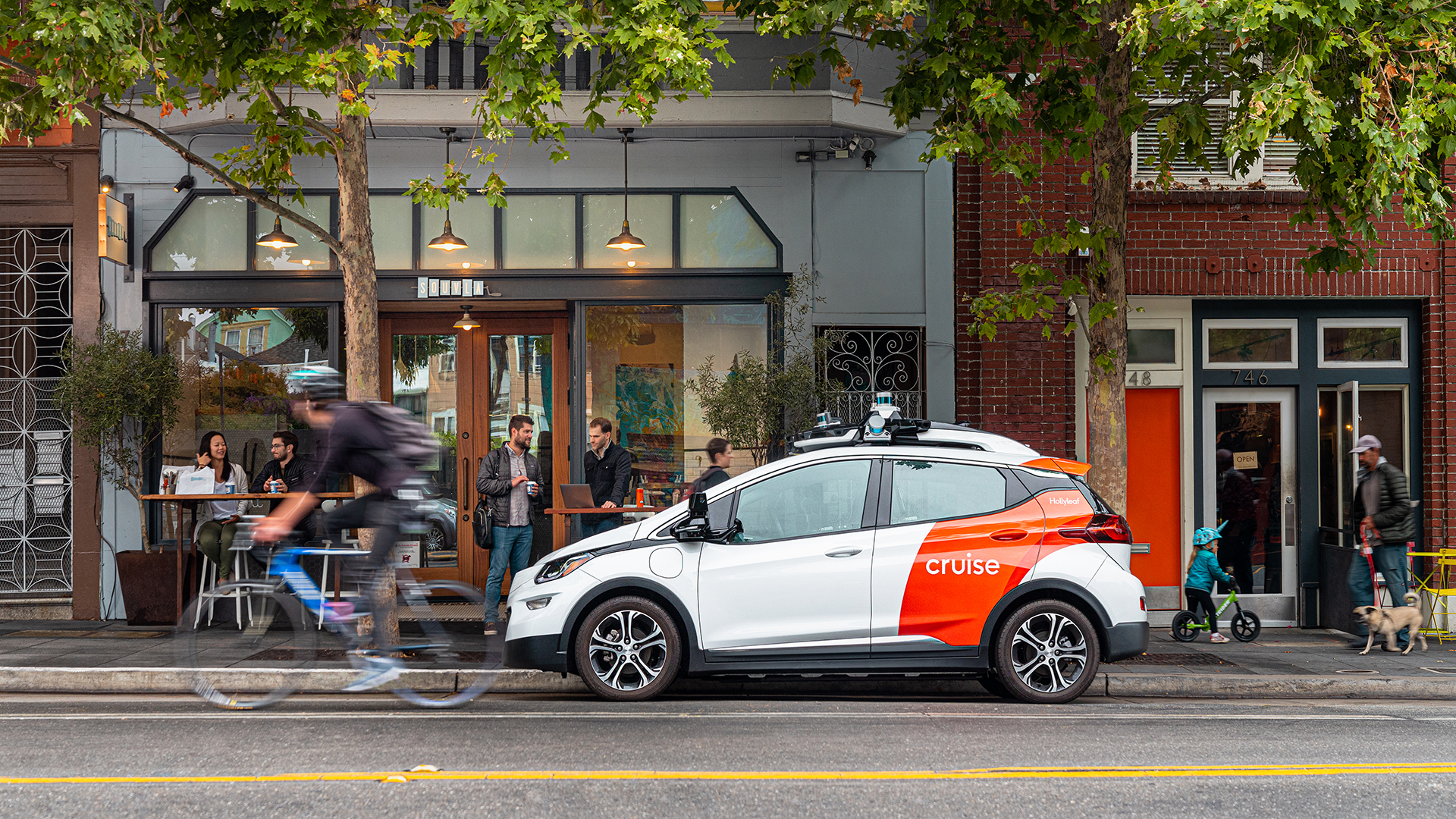A video showing a driverless car being stopped by the police and then attempting to drive away went viral over the weekend. San Francisco police stopped one of Cruise's autonomous Chevrolet Bolt EVs, likely because the car's headlights were not on despite it being night. In the video, first posted to Instagram on April 2, an officer can be heard saying, "There's nobody in it."
But a few seconds later, after the officer walks back to his police car, the autonomous vehicle—perhaps deciding that the traffic stop was over—tries to drive away before pulling over to a stop a few hundred feet away.
Cruise says that the car wasn't trying to make a run for it. The vehicle first yielded to the police vehicle, then pulled over to a safe spot for the actual traffic stop, the company says. One of the police officers contacted Cruise to inform it of the situation, and the driverless car did not receive a ticket. Cruise says it has fixed whatever caused the car to drive without its headlights at night.


 Loading comments...
Loading comments...
